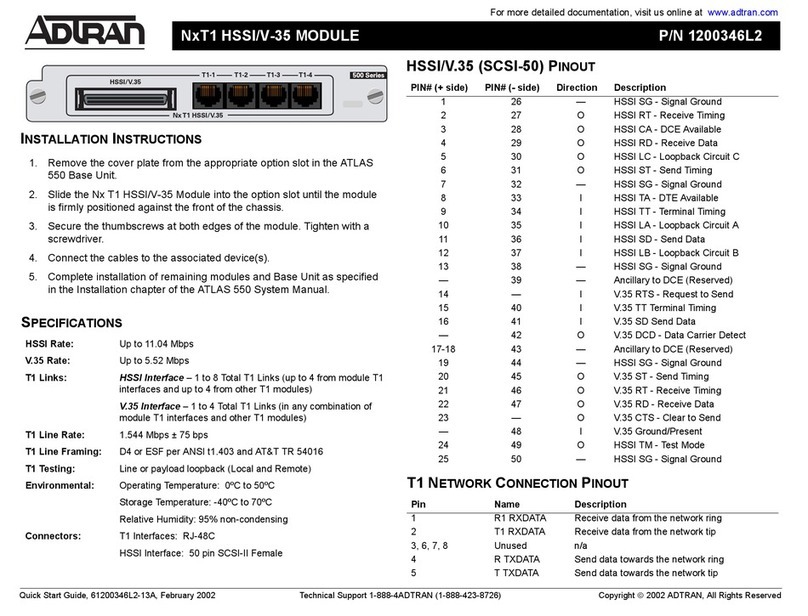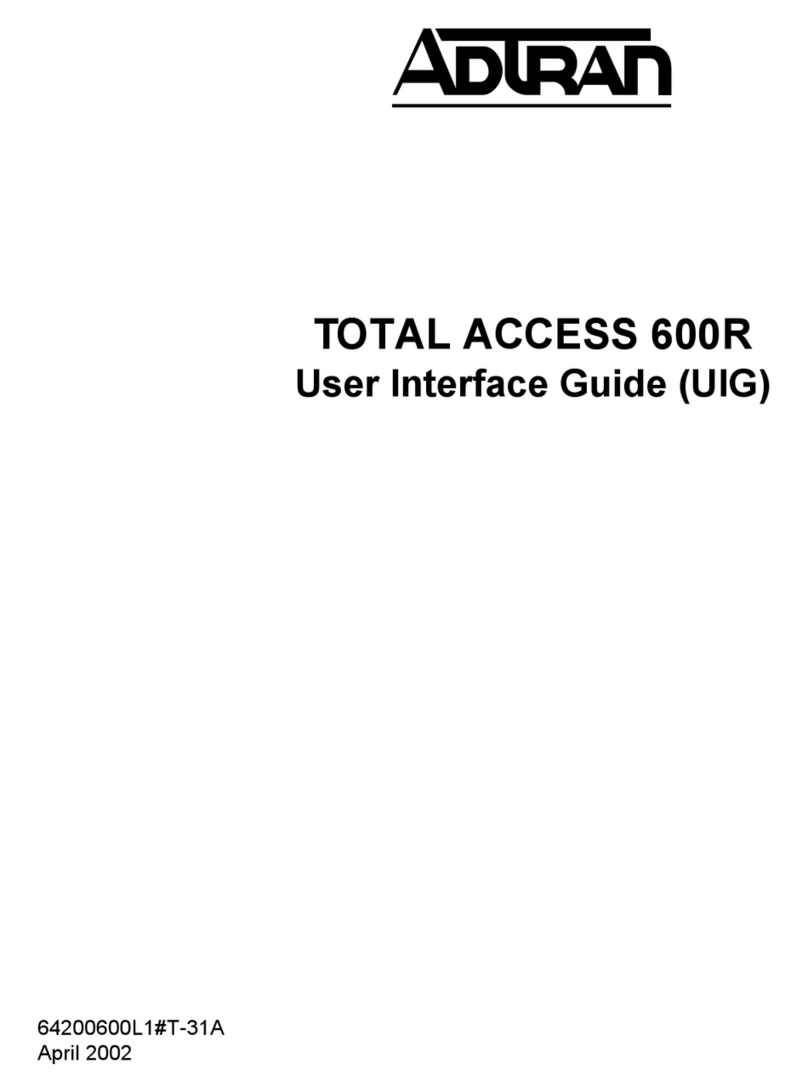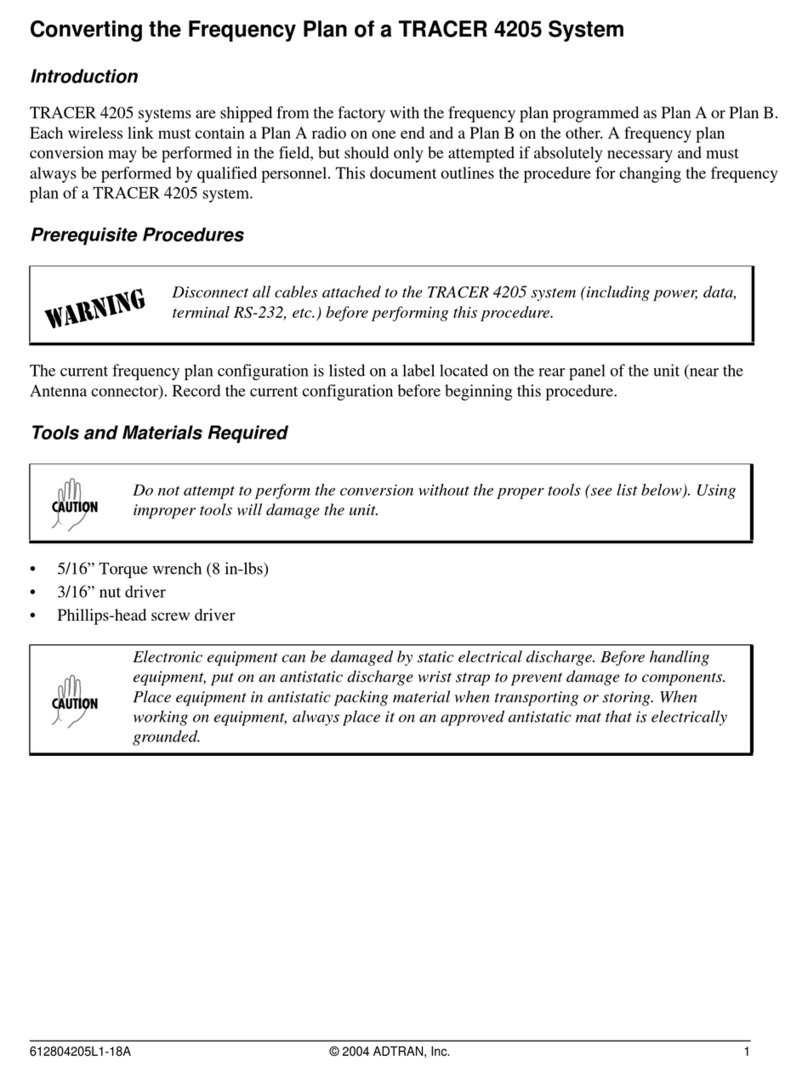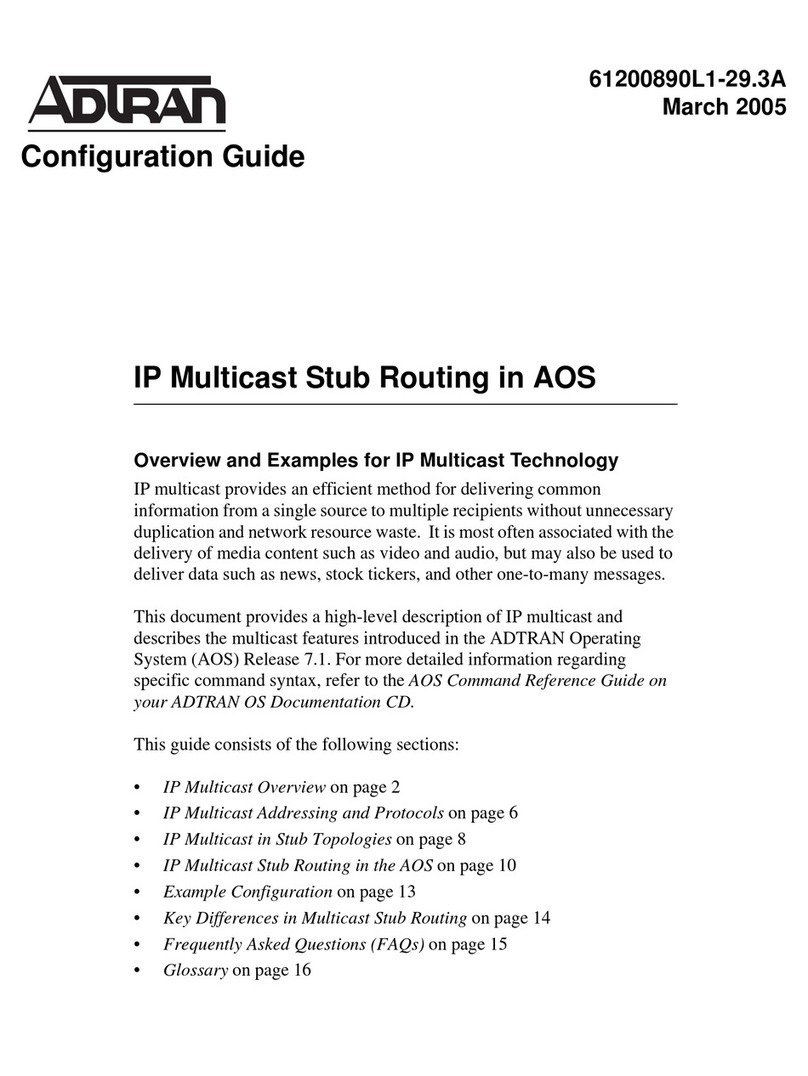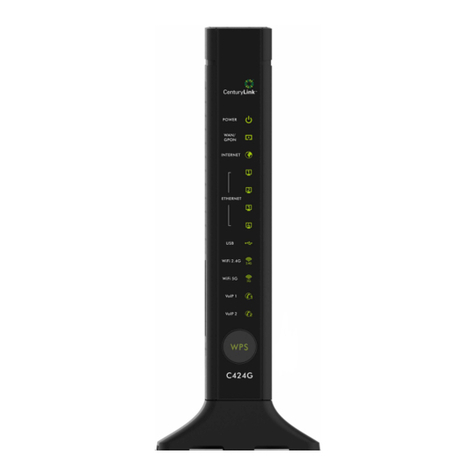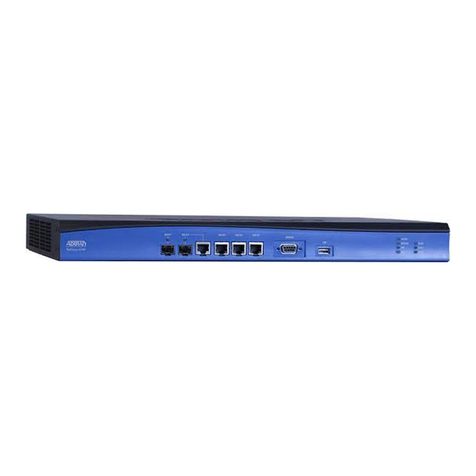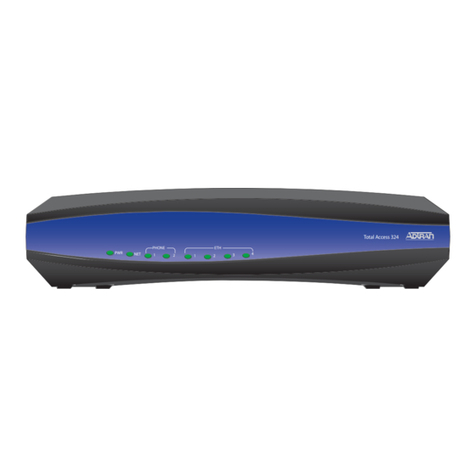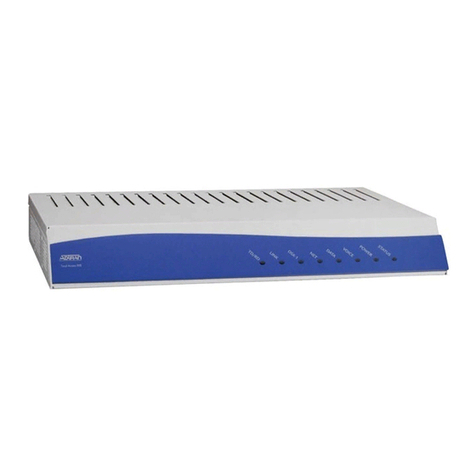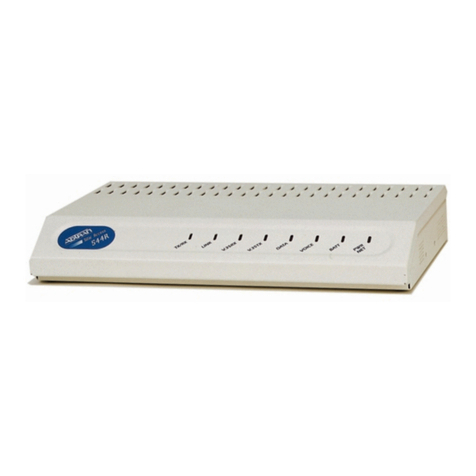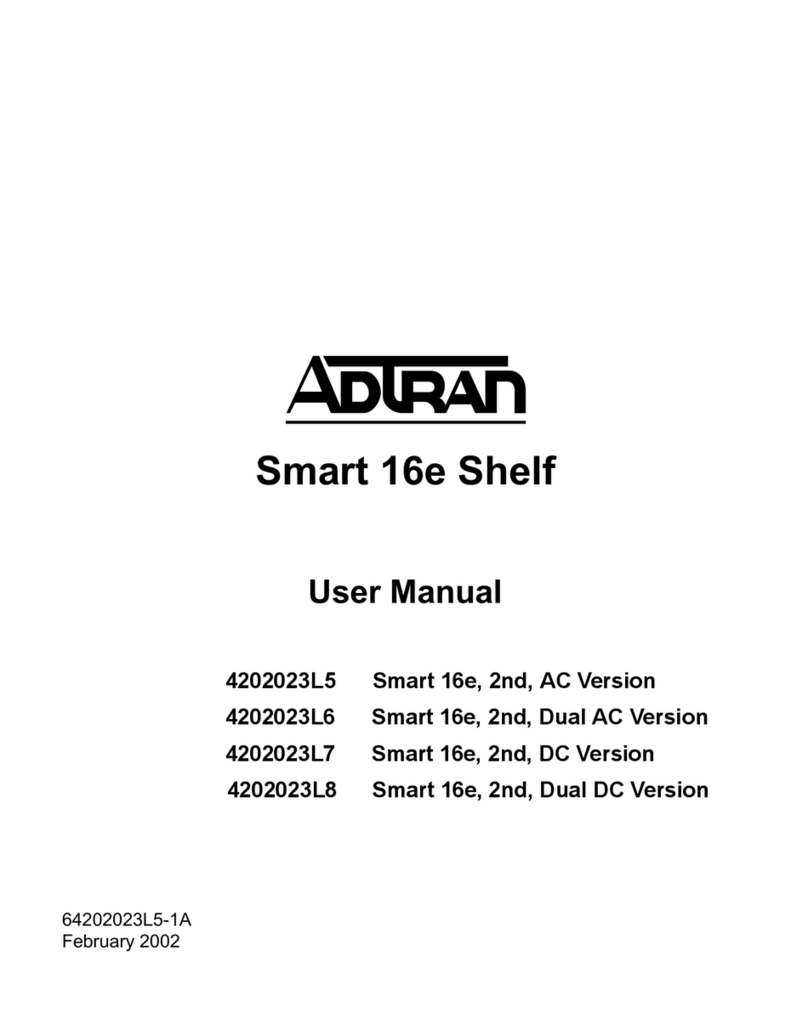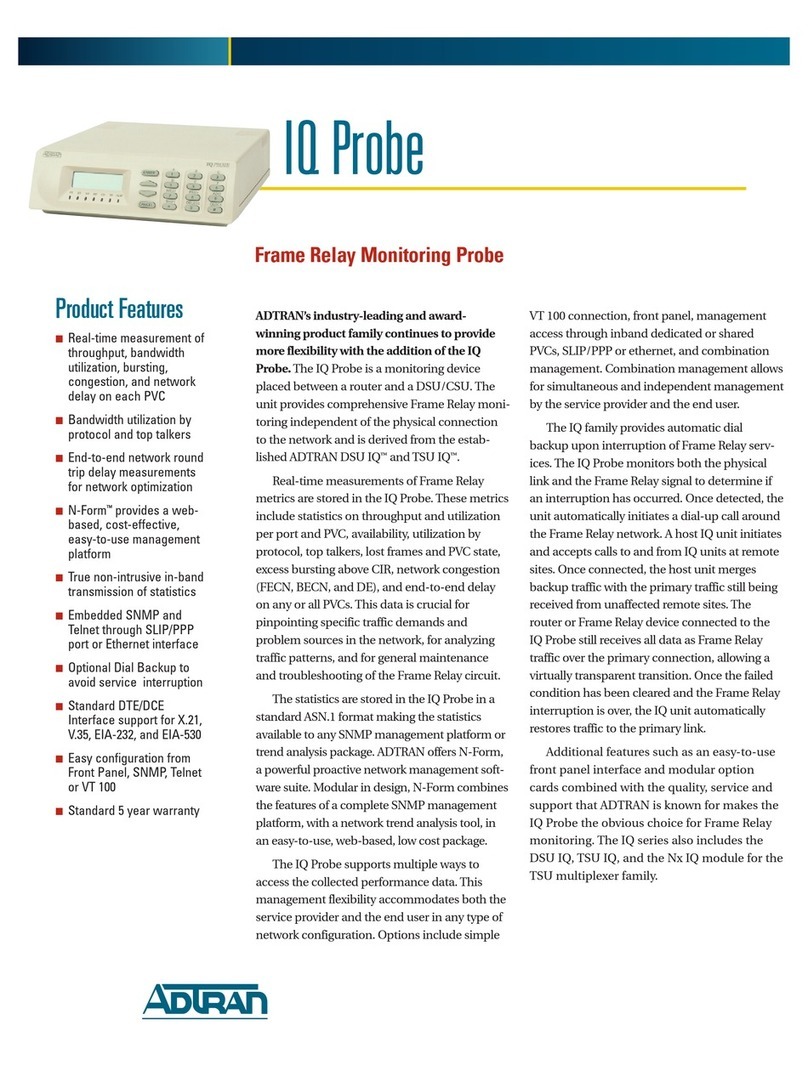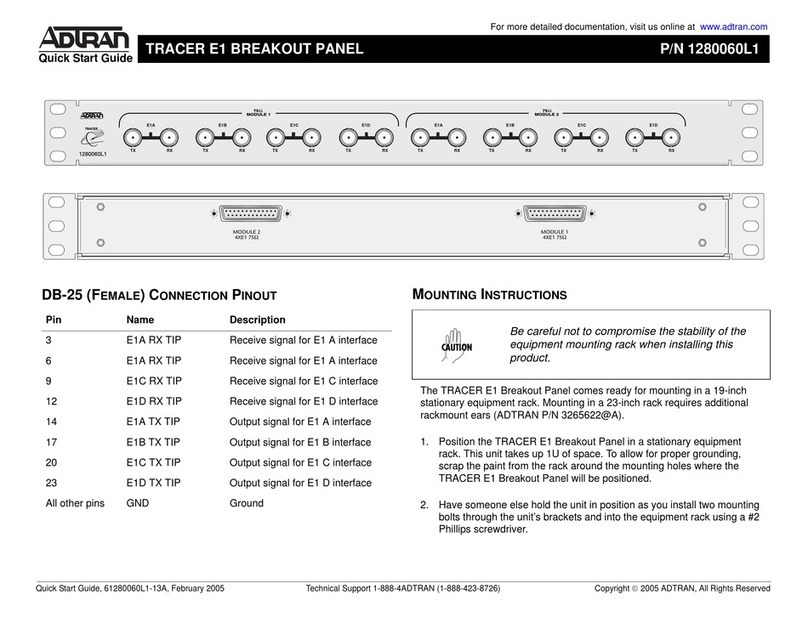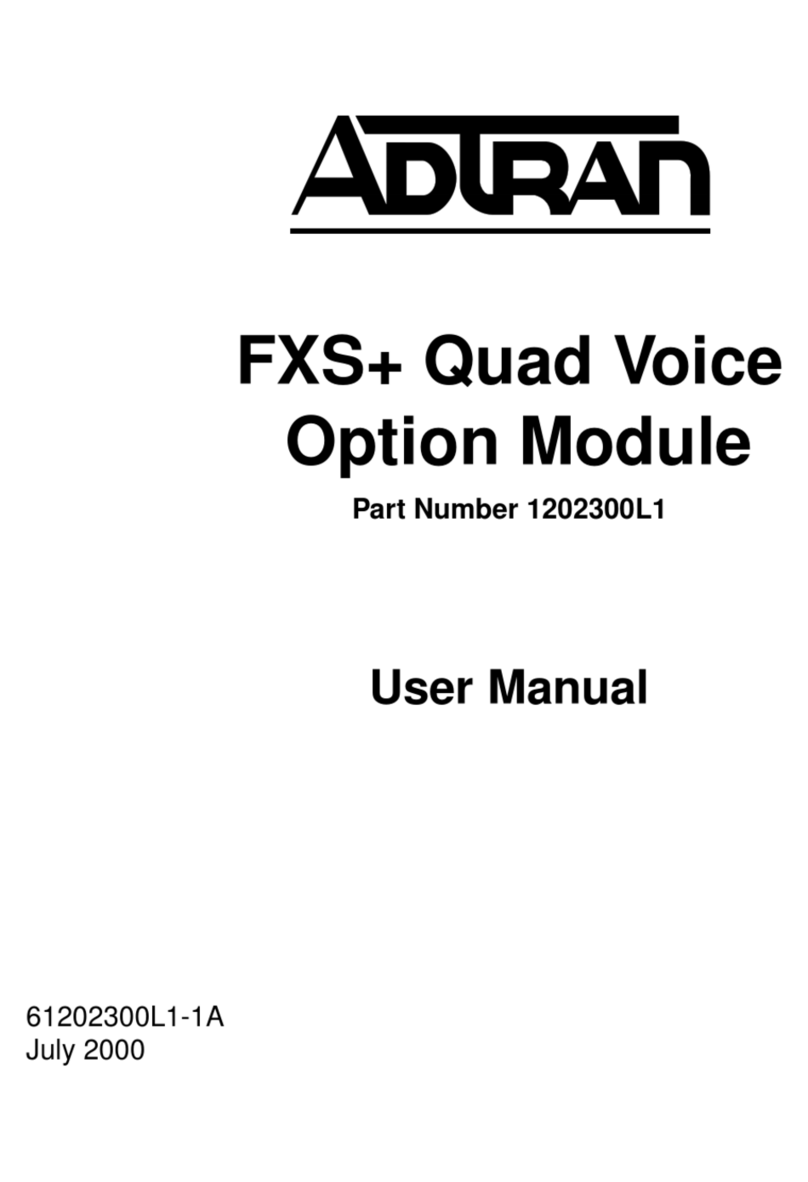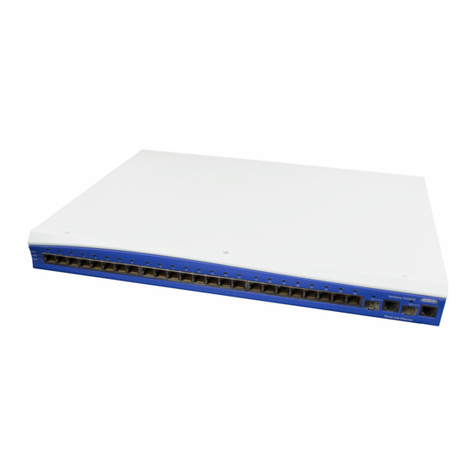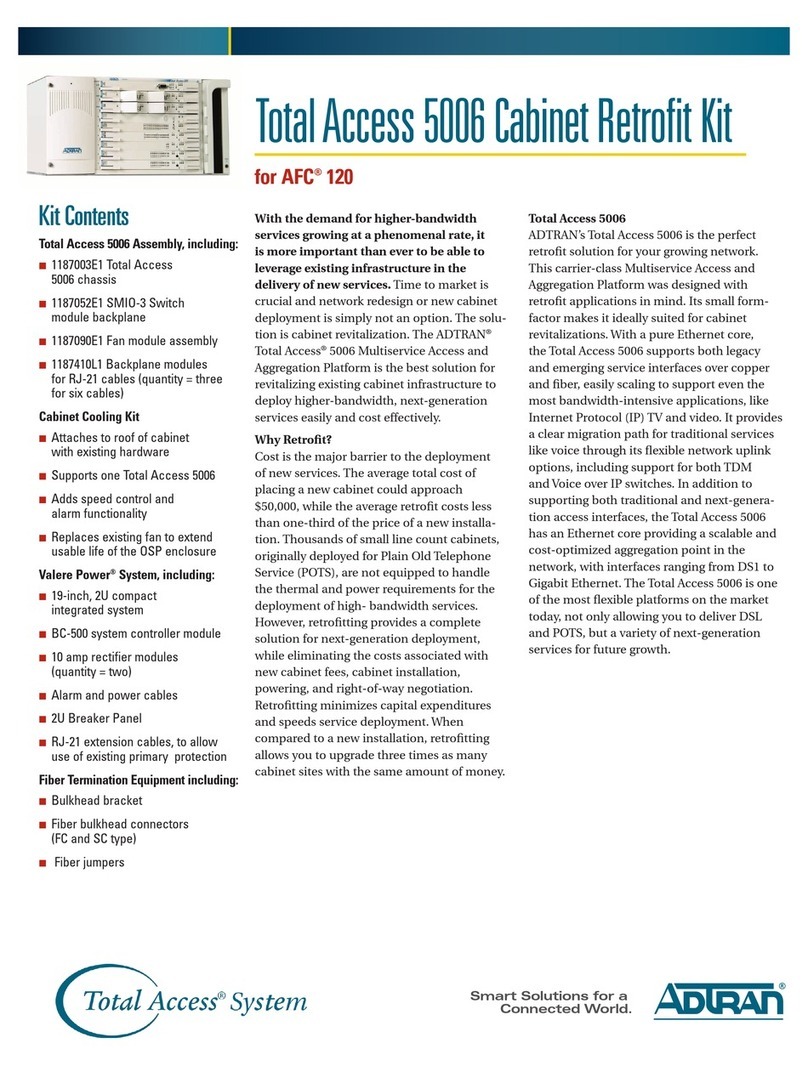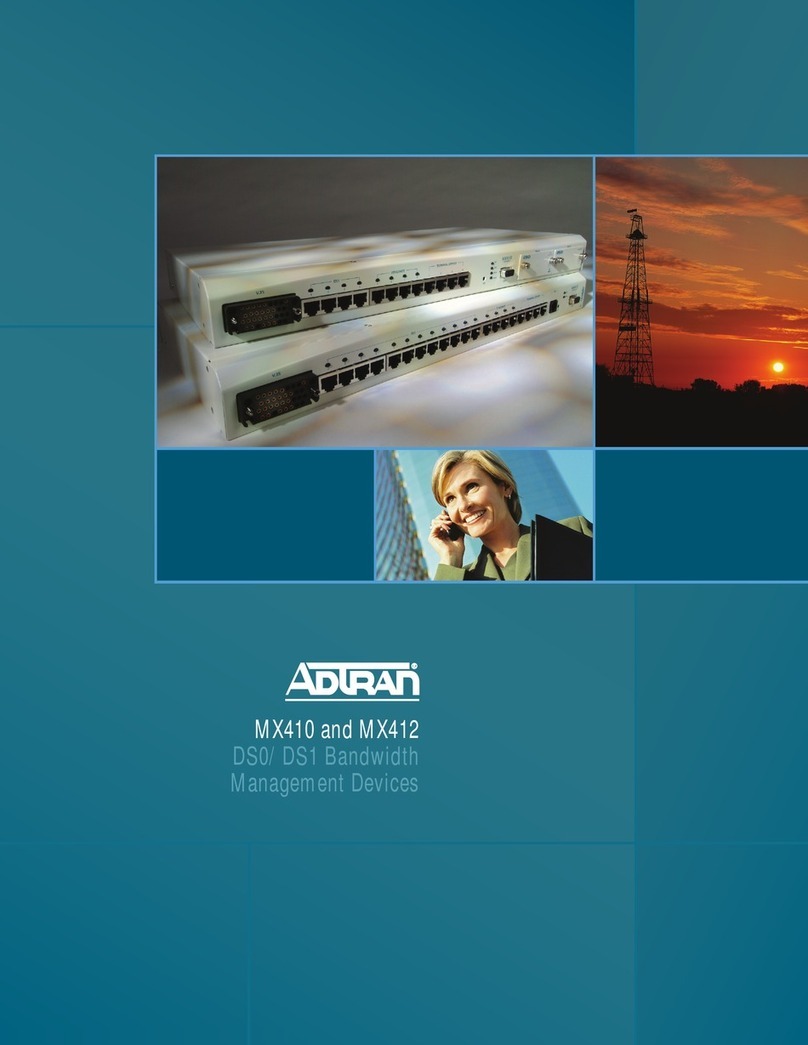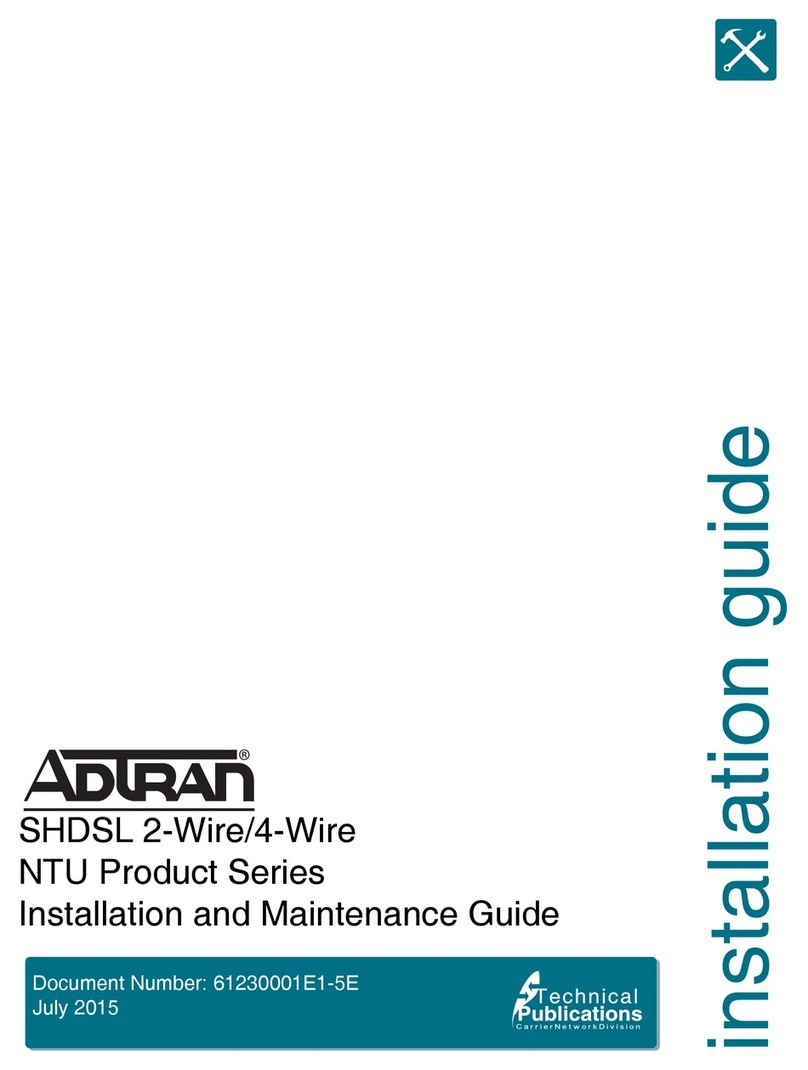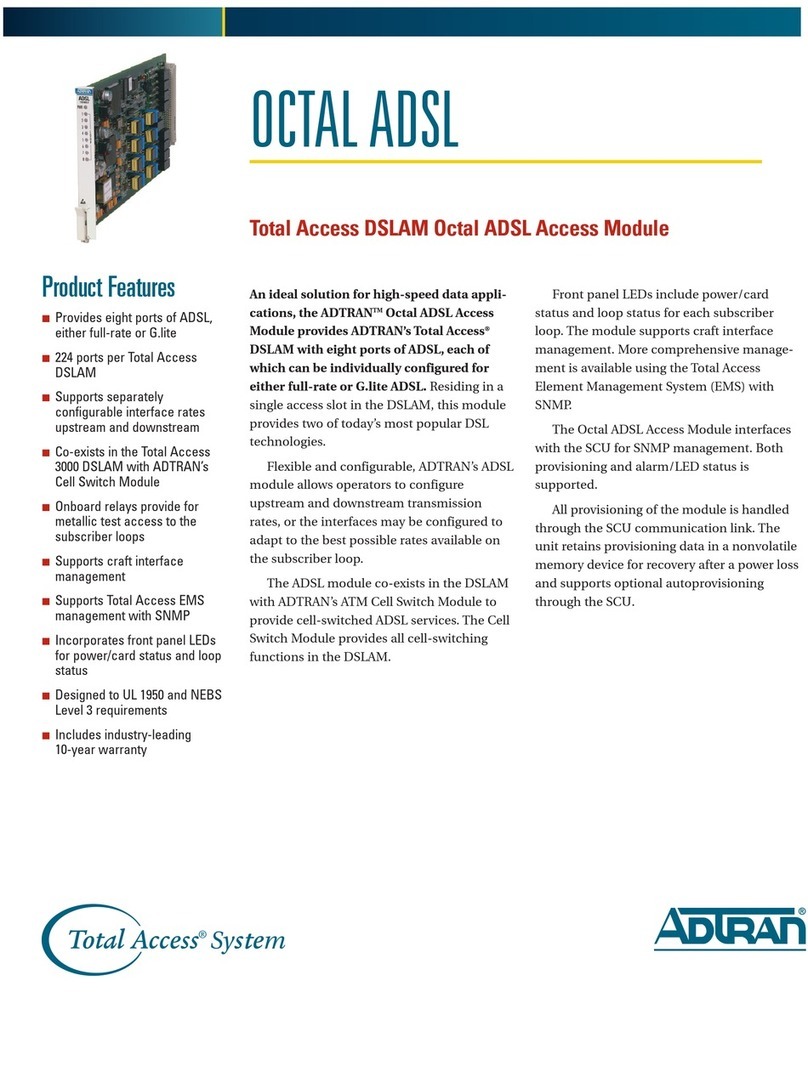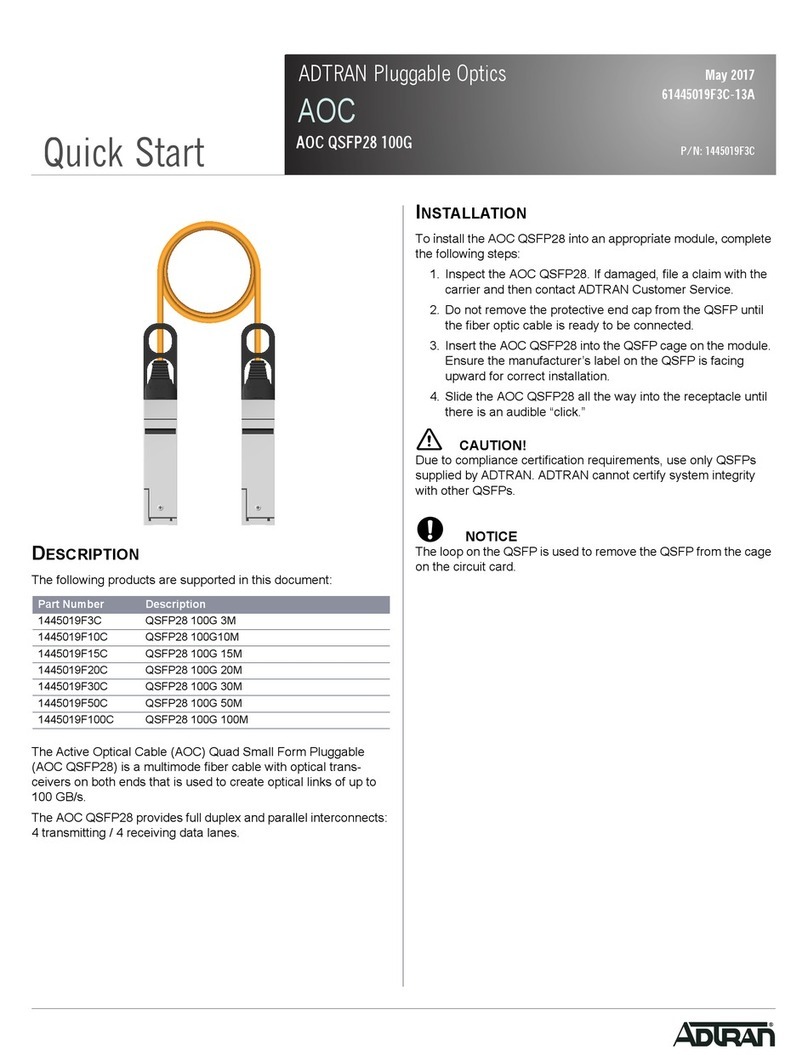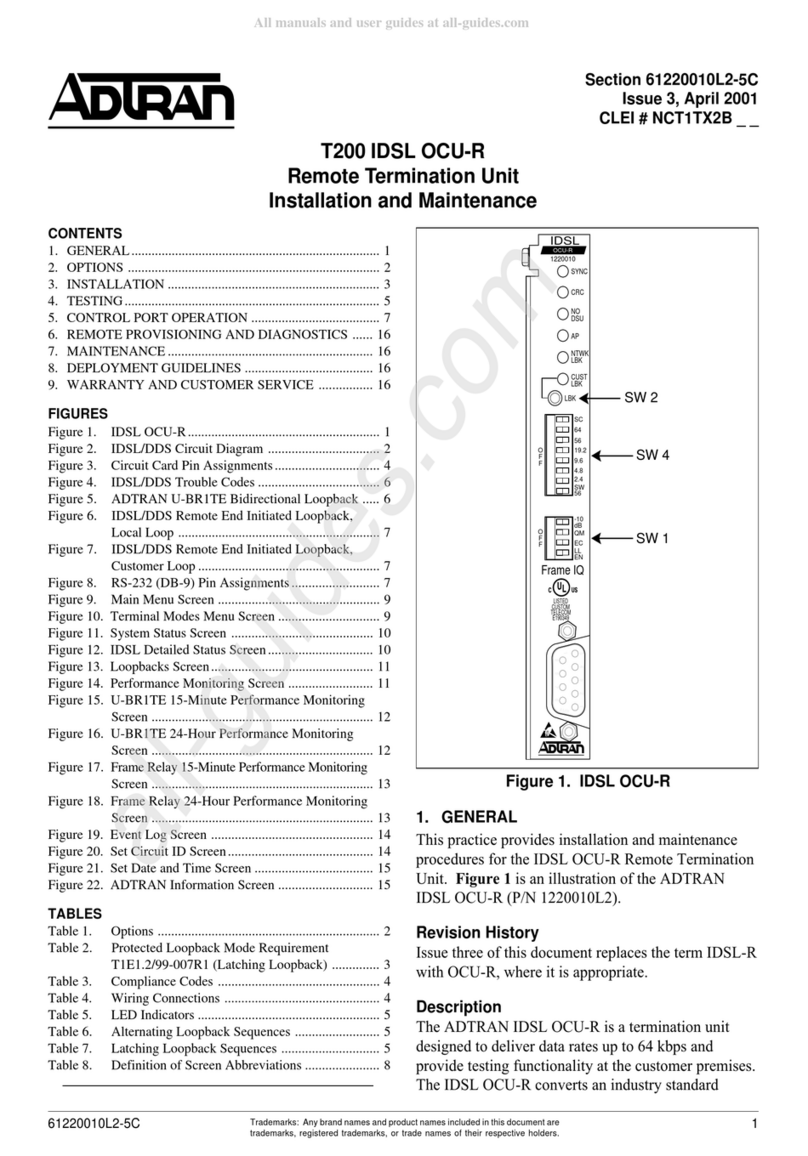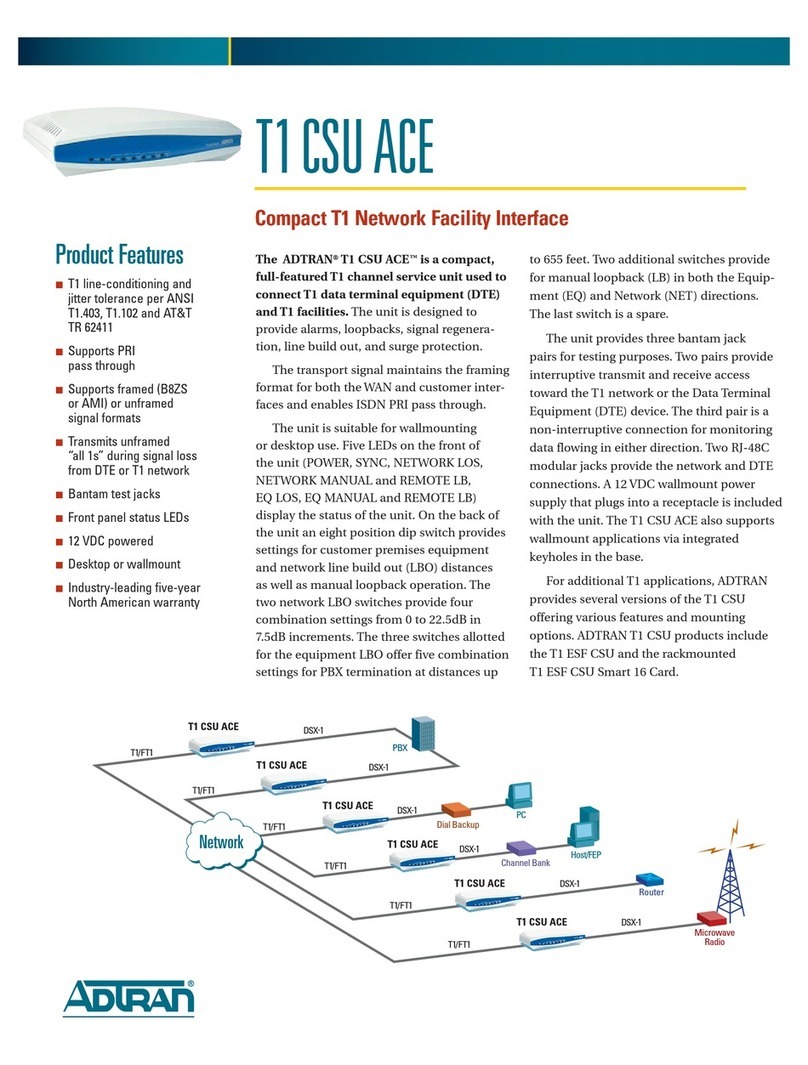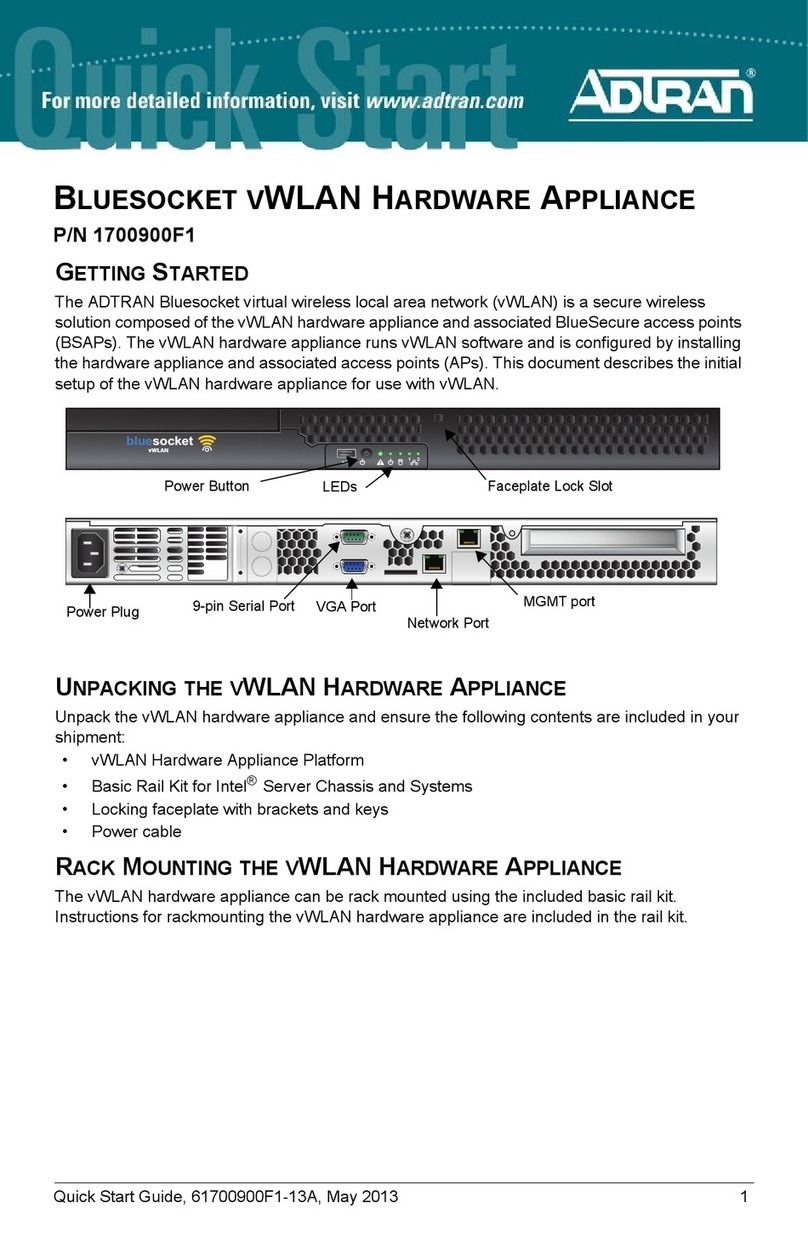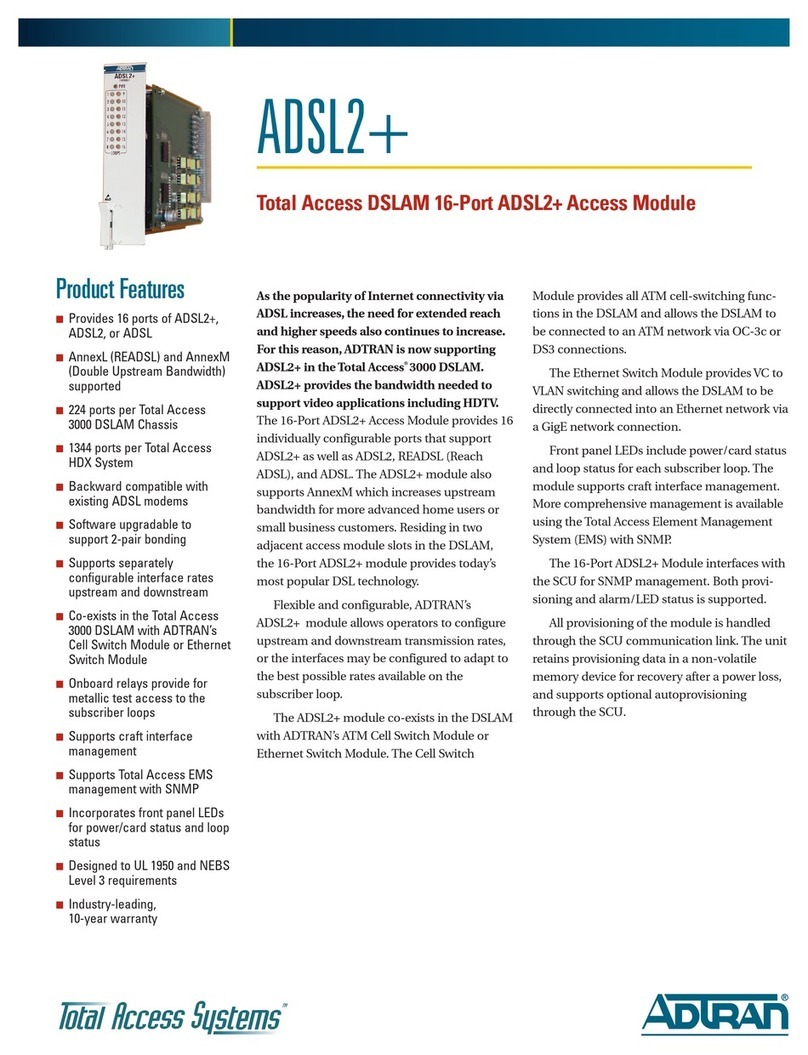
6 61212075L2-5D
• To initiate a dual (bidirectional) loopback, depress
SW1 three times and hold for 5 seconds. During this
time the NTWK LBK and CUST LBK LEDs flash
rapidly indicating the dual loopback is arming.
After 5 seconds the dual loopback enables, the
NTWK LBK and CUST LBK LEDs turn on solid,
and SW1 can be released.
If SW1 is released before the arming period expires the
loopback does not initiate. This feature decreases the
chance of an inadvertent loopback.
If a loopback is in effect, depressing SW1 will disable
the loopback regardless of initiation point.
Loopback priority is in response to the most recent local
or remote input. The LBK LEDs show status.
3. TURNUP
When inserted into a host with power, the STATUS LED
turns on red while the NIU3 PM performs a
self-test. If the self-test passes, the STATUS LED turns
on green and the remaining LEDs go through an on/off
sequence indicating the NIU3 PM is online. If the test
fails, the STATUS LED remains red and the host bypass
relays will maintain data flow around the NIU3 PM.
Shutdown procedures are not required.
4. OPERATION
During normal operation the NIU3 PM is transparent to
the network. In the event of circuit trouble, test
equipment at the central office control terminal can
monitor the loop. When a loopback is initiated, the
transmit/receive paths can be tested to the customer
interface.
Monitoring
Front panel mid-size monitoring jacks provide
nonintrusive monitoring access through a high-
impedance bridging circuit. The monitor level is
nominally 21.5 dB below the signal power. The signal
to the network is monitored via the NTWK MON jack;
the signal to the customer is monitored via the CUST
MON jack.
Loss of Signal
In the event of a loss of signal, the NIU3 PM provides
both a “keep alive” signal and LED notification.
• If there is no signal from the network, the NTWK
LOS/AIS LED turns on red, and the NIU3 PM will
transmit an unframed all ones signal toward the
customer.
• If there is no signal from the customer, the CUST
LOS/AIS LED turns on red, and the NIU3 PM will
transmit the signal selected by Option 3 on the
Provisioning menu. The three selections that can be
sent to the network upon customer LOS are these:
– Framed Idle
–AIS
– No Signal
Loss of Framing
If either NTWK or CUST C-Bit and M13 LEDs are both
off, the associated network or customer signal is
unframed.
5. TESTING
The NIU3 is compatible with standard test equipment.
Digital testing is accomplished with the T-BERD 310 or
equivalent.
FEAC Loopback
The test device at the CO inserts a DS3 NIU FEAC (Far
End Alarm and Control) loop up code (C-bit parity
framing only) toward the NIU3. The NIU3 then
performs a network loopback. The loopback is
terminated by a DS3 NIU FEAC loop down code.
Loopback and Bypass Configurations
There are four basic NIU3 normal/loopback configu-
rations:
INormalOperation
II Network Loopback
III Customer Loopback
IV Dual Loopback
Each configuration is shown in a block diagram in
Figure 6. Each block diagram represents the NIU3
circuit card in normal operation or a particular
loopback.
Each block diagram illustrates the relative position of
the detecting circuits to one another and the LED
indication associated with each, plus the location of the
mid-size monitoring jacks. See Table 1 for LED
descriptions.
Bypass Operation
The bypass relays are represented in block diagram I
only. The bypass relays are independent of the NIU3
circuit card and loopback configurations. The relays
switch to the bypass position during one of the
following conditions:
• The NIU3 circuit card fails or loses power
• The NIU3 circuit card is removed
• Flash upgrade is in progress
